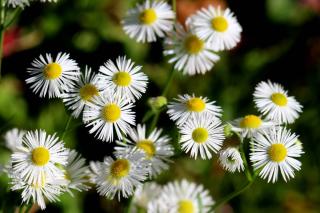

Erigeron is a very cute little plant which is a hot trend nowadays.
Name – Erigeron or fleabane
Family – Asteraceae
Type – perennial
Height – 8 to 16 inches (20 to 40 cm) depending on variety
Exposure – full sun
Soil – ordinary, rather light
Flowering – May to October
Ease of care, planting and the attention you give it will especially boost blooming.

In summer, planting can still be performed, but take care to water more regularly.
Just like the aster, ordinary soil mixed with a bit of soil mix is perfect.
Avoid compact and heavy soils that would retain water instead of releasing it to the plant.
To nicely cover a surface, plant around 8 or 9 flowers to a square yard (1 m²).
In order to multiply your erigeron, divide the bunch in spring every 3 or so years.
Easy to grow, erigeron only asks for very little care.
During planting, water when the soil has dried to help the root system get set up.
In fall, after the blooming or at the beginning of spring, cut back the crown as short as possible.
This step aims at snipping all stems down to a height of about 4 inches (10 cm) from the crown head, to stimulate the growth of erigeron while promoting the next flowering.

This easy perennial hails from North America and adapts very well to any temperate climate. Even though some species like karvinskianus aren’t so hardy and need a relatively hot climate to thrive, most species are hardy.
The erigeron genus has over 200 denominations, some of which are grown as annuals.
The most famous species are Erigeron karvinskianus, glabratus, alpinus, uniflorus, dimity, paolii or violetta.
In order to trigger appearance of new flowers, remove wilted flowers regularly.